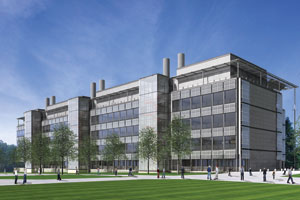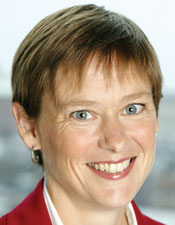Fiona Cousins specializes in translating sustainability from an abstract idea into concrete solutions on the ground.
Originally trained as a mechanical engineer, Cousins now leads sustainable consulting and building design teams as a principal in ARUP’s New York office.


COUSINS
Sustainable building captured Cousins’s interest early in her career. She started her first full-time job with ARUP’s UK office in 1990 working in the research and development group on programs to calculate the overheating risks of highly glazed spaces and energy usage in buildings. A year later she moved to the design group.
“I basically became the expert on the energy calculation program, but I was working in design,” Cousins says. “I became interested in how you can reduce the amount of energy things use.”
She learned about the green building movement at a conference in 1998, shortly after moving to ARUP’s New York office. During the conference, people talked about various ways to save energy.
“I remember thinking, we’ve been doing this for five years,” she says. “We do not do it on every project, but if given the opportunity we have always made it lower energy than higher energy. It is just good practice.”
She says the conference helped her realize that, besides low energy use, designers should be looking at water and other resource use along with building functionality, durability and how buildings impact occupants’ comfort and health. “So it started with energy and grew from there,” Cousins says.
On the Job On the day I caught up with Cousins, she was in the office working on sustainable consulting projects that encompassed building design, master-planning exercises and organizational strategies. She was also keeping tabs on several large construction projects.
The sustainable building projects she was directing fall into two categories depending on client requirements. The first employs a LEED framework with specific strategies. “Integrated design suggests that you look at these strategies right at the beginning of the design process,” Cousins says.
The second category, which she finds more useful, starts by defining broad directional goals, such as carbon neutrality, water self-sufficiency and low maintenance. “You set big directional goals that you can deal with on a more abstract and conceptual level in the early stages of design,” she says. “You might not make the goals, but that is the direction you are heading in. Then you start thinking about the LEED strategies which are supportive of the goals.”
With either type of project, the methodology for designing a low-energy building is the same. “First you reduce your load,” Cousins says. Once the load is known, the next step is to determine how efficient you can make the equipment, such as the motors, chillers, boilers and heat-recovery systems.
The final step, energy source substitution, does not reduce energy utilization but...


Post a comment to this article
Report Abusive Comment